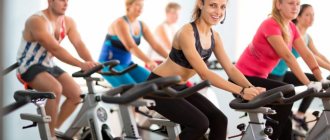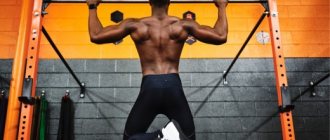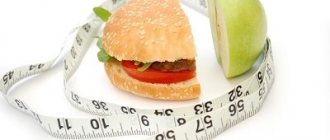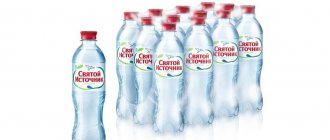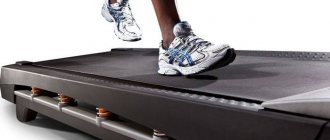What is MPC and why is it important for an athlete?
VO2 max, or maximum oxygen consumption, is how much oxygen from inhaled air your body can consume and process at its critical, maximum speed or power. That is, your body can take a certain number of milliliters of oxygen from the inhaled air in order to subsequently deliver it through the bloodstream to the working muscles and there, through a cascade of biochemical processes, transform it into energy, which you realize in the form of the same maximum speed.
The body's ability to absorb oxygen is determined by our physical and physiological parameters. This includes lung volume (or vital capacity of the lungs), heart size and its ability to push a large amount of blood in one contraction, vascular elasticity, blood quality (level of red blood cells, hemoglobin, iron, carrying this oxygen to the muscles), mitochondria (energy stations of cells) , as well as a strong central nervous system that can withstand critical speeds. Gender, age and excess weight also determine the level of BMD.
The paradox of this indicator is that it is measured under conditions of maximum work of the body, but reflects our aerobic abilities or endurance, including general endurance, that is, not at all the maximum capabilities. In turn, the number of training sessions at the MOC level is inversely proportional to the duration of the distance. That is, in marathon and ultra-marathon running, training for VO2 max is not as important as in middle-distance running (800 m, 1500 m).
In general, the theoretical logic of this indicator is such that the higher it is for a particular person, the higher the speed he can show at a distance. In addition, the higher the maximum oxygen consumption, the better the endurance, the easier long-term aerobic work is.
Is it possible to improve your IPC level?
The MOC of the average healthy trained person can reach 60-65 ml/kg/min. But it is believed that the MIC indicator is a value given to a specific person by nature, although it can still be developed to a certain level. And you can successfully develop the body itself at a certain level of MIC for quite a long time and grow in results.
In our working muscles, not all muscle fibers are involved in work. The body is not its own enemy in order to spend 100 percent of the pool of muscle fibers on a low-intensity, by its standards, lifestyle and even “feed” them with energy.
So, if you periodically “pull” the body with extreme loads (as well as strength training), then the number of working muscle fibers will increase, and, consequently, their nutrition will increase. That is, the body will be forced to adapt and expand its boundaries of speed and endurance with a constant VO2 max, especially if you have reached its natural limit.
MOC is not important in itself, but how you use it in training, that is, what speed you have at the level of this indicator, and how to increase it. In running, this indicator is very important and reflects the athlete’s performance and his potential at average distances of 1500-5000 meters.
The higher the level of the athlete, the higher his MPC. However, with equal MOC values, it is not at all necessary that athletes will run the same. And with unequal IPC values, it does not mean at all that an athlete with a higher indicator will be faster than another. This may depend on the muscular system, the nervous system, the vascular system and other factors.
What should be the maximum oxygen consumption?
You shouldn’t get hung up on this notorious MPC figure. It is much more important to train certain qualities that are needed at a particular distance, and a growing (or not growing) MPC as a certain point of control of your trained (or untrained) functional capabilities will be one of the beacons of quality.
The qualities presented to the body by a particular distance are indicators such as running economy, special endurance, strength endurance, speed endurance, speed itself, etc. It is from the set of trainings for these qualities (and they are all measurable) that your result is formed. This is an amazingly voluminous job!
How to develop endurance in running
That is, in improving results at a certain distance, many parameters go together, and one depends so much on the other that it would be strange to hear from a coach or athlete - and this also happens - the following phrase: “Today we are training MPC.” Or: “How are you working to improve your IPC?”
A much more logical statement would be: “Today we are doing segments (interval training) at the MPC level to improve speed endurance in the half marathon. And we measured the MIC in the laboratory, and now we can rely on this data in order to develop our body.”
And if we talk about beginning runners, then the MOC indicator for them is not at all objective and approaches the level of PANO - the threshold of anaerobic metabolism. By developing the body with basic training (cross-country running at a low heart rate, strengthening target muscles, joints and ligaments), we simultaneously develop all indicators, including VO2 max, so it is not at all necessary to conduct special interval training.
Programs
How to run to lose weight in your legs? There are three most effective running methods that make it possible to lose weight in your legs:
Interval running
The essence of the interval running technique comes down to a combined load of aerobic and anaerobic types. In this case, jogging at maximum speed should last only one minute, after which a leisurely jog is carried out for a couple of minutes. During this time, the pulse normalizes and breathing is restored.
Running up the steps
A quick climb up the stairs is expected. During this time interval, the maximum number of calories should be consumed, since the leg muscles will be subjected to serious stress. During the descent, rest is performed, and during a rapid ascent, the training is equated to anaerobic exercise. During the exercise, there should be softness in the movements in order to prevent traumatic blows to the muscles.
Daily jogging
The duration of such a run should be one and a half hours. The longer the workout, the higher the chances of intense calorie burning. If activity is performed at a low heart rate, then the body uses fats, which provokes easier and more effective weight loss.
It is important
However, the best use of running is a comprehensive approach to improving your physical appearance while losing excess weight. Preparing and following a balanced diet, as well as consulting with a sports expert, will definitely give positive results.
Video. How to lose weight in your legs
How to Lose Weight in Legs: Remove Extra Centimeters.
How to run correctly. Training for beginners. A great way to lose weight!
How to lose weight by running
How to quickly and effectively lose weight in your legs and thighs
- >
How to Lose Weight in Legs: Remove Extra Centimeters.
How to get slender legs and remove extra centimeters? If you are watching this video, here and now, and you are also concerned about this issue, then you are a lucky person. You've come to the right place at the right moment. Because today we will do a fantastic complex, a fantastic workout that will remove extra centimeters from our legs very quickly.
- >
How to run correctly. Training for beginners. A great way to lose weight!
Running is one of the best ways to lose weight! This is useful for every runner to know. How to warm up before running to achieve excellent results over the distance.
- >
How to lose weight by running
Video on how to structure your running workouts to ensure fat burning. And the simplest advice is to run for results. When you improve your speed-time performance with each run, your body develops, which means it produces hormones responsible for development. These are the same hormones that pull fat from under the skin and help burn it.
- >
How is MIC measured?
There are so-called absolute and relative values for measuring maximum oxygen consumption. The absolute indicator is expressed in milliliters per minute, that is, this is the largest amount of oxygen in milliliters that a person can consume in 1 minute. The average healthy person who does not engage in sports consumes 3200-3500 ml/min; for those involved in sports, the MOC reaches 6000 ml/min.
Absolute MIC indicators are directly related to the body size (weight) of a person. Therefore, rowers, swimmers, cyclists, and speed skaters have the highest MPC values. And it is in these sports that absolute MPC indicators are of greatest importance for physiological assessment.
Relative MOC indicators in highly qualified athletes are inversely related to body weight and are expressed in milliliters per kilogram of body weight per minute (ml/kg/min). The fact is that when running and walking, a vertical movement of body weight is performed, and, therefore, other things being equal, the greater the weight of the athlete, the greater the work he does. Therefore, long-distance runners have a relatively low body weight. So sometimes, to increase your MOC and, as a result, to improve your performance, it is enough to lose weight, especially if you are clearly overweight.
How many calories are burned?
There are no universal figures for calorie consumption during jogging. These are individual indicators for each person.
Calorie consumption depends on:
- From the physical endurance
of the body. - On the speed
of metabolic processes. - From body weight.
- From the duration
, speed and nature of the run.
With a slow metabolism, the result of burning calories will be insignificant.
With rapid metabolic processes, it is much larger, but weight is gained as quickly as it is consumed. The calories obtained with the latter, before jogging and eating food with fast carbohydrates and polysaccharides, are usually consumed within 40 minutes after the start of physical activity.
Then the body begins to use up its own fat reserves. Calorie consumption slows down, because when burning fat, more complex biochemical processes take place. With different types of load, depending on the nature of running and your own weight, calories are burned differently.
Running can be:
- amateur;
- jogging;
- sprint;
- interval;
- over rough terrain;
If a person weighs about 70 kg and runs at an average amateur speed of 8 km per hour, then he will spend approximately 600 to 1 thousand kcal in one hour of jogging. With other types of running, the calorie consumption will be different.
The choice must be approached individually based on the physiological characteristics of the body and the tasks set to achieve the desired form.
The value of MIC in men and women
BMD values in women are on average lower than in men due to higher fat reserves and lower hemoglobin levels. Since BMD is expressed relative to body weight, the presence of fat reserves in women associated with physiology puts them at a disadvantage in this sense. Hemoglobin carries oxygen to tissues. Less hemoglobin means less oxygen per unit of blood. BMD levels in well-trained women are on average 10% lower than in well-trained men.
- Male 35 years old, leading a sedentary lifestyle – 45 ml/kg/min
- Woman 35 years old leading a sedentary lifestyle – 38 ml/kg/min
- World class 5K runner – 79 ml/kg/min
- World class 5K runner – 70 ml/kg/min
- World-class marathon runner – 73 ml/kg/min
- World-class marathon – 65 ml/kg/min
Running program for weight loss
So where do we start? From the walk!
- For the first 1-2 weeks, don’t expect sprinting achievements from yourself. 15 minutes of confident fast walking in the first lesson, 20 in the second and an hour of light jogging in the 14th will save your health and allow you to slowly increase the load to the desired level. Run 3-4 times a week, no more.
Monitor your condition. Falling to the ground after training in complete exhaustion and with the thought “shoot me” is unacceptable! Ideally, your heart rate should not rise above 130 beats per minute, and return to its normal pace no later than 30 minutes after training.
Be sure to stock up on a pair of headphones and pick up a cheerful one. It will be easier to run under her energetic accompaniment.
- Having gained experience and slightly strengthened your muscles, you can move on to a more difficult pace. But don't rush right into the quarry! For the first half of the workout, the usual jogging is maintained, and only after 20-30 minutes try to take a faster pace. This way the muscles will warm up and receive the necessary preparation for the effort.
Even if you really want to say goodbye to the pounds as quickly as possible, do not try to set Olympic records while running to lose weight. Exactly how much to run and how, your health will tell you, but under no circumstances overload your body for more than an hour. After 65-70 minutes, he will stop drawing energy from fat reserves and will start working on muscle tissue. Do you need slimness at this price?
Sample training program:
If you prefer to measure your workouts by distance rather than time, fitness experts offer this option: beginners run from 3 to 7 km, advanced athletes – 10-12.
- Experienced runners can use interval running to lose weight. It allows you to achieve greater effectiveness from your workout, and in less time. Its algorithm is not complicated. The first 100 meters you walk at a fast pace, the second you cover at an easy trot. In the third 100-meter dash you make a leap - you literally run to the limit of your capabilities. And finally, slowly run the last 100 m. Then take a short rest (1-3 minutes) and repeat the entire cycle. 25 minutes of interval running will replace a regular hour-long run.
By the way, keep in mind: if you have given it your all, calories continue to burn intensively for 2 or even 6 hours after training, when you are already fully occupied with your usual activities. Great, isn't it?
Important point! Maintain proper body position when running to lose weight. The photo demonstrates it quite clearly: the legs should not be completely straightened so as not to damage the joints, the arms should be bent at the elbows, and breathing through the nose. Don't raise your knees too high and don't throw your heels too far back, touching your butt.
How to determine your MPC
There are several ways to determine your MPC. For example, you can run 1500m at full speed in a stadium. The result in numbers will be an indicator of your functionality at the IPC level. In the process, you can also track your heart rate while running. And continue to build on this data in training.
However, this method is not suitable for everyone. For example, if you are just starting to run, then most likely your performance will not be entirely adequate: it is not so easy to force yourself to run almost 4 laps around the stadium at maximum. This is not only the work of muscles, heart, lungs. Mainly, this is the work of the nervous system, and if it is not accustomed to endure well, then after some very short distance you simply will not be able to maintain a high pace, that is, the corresponding efforts.
Another way to determine MIC is relatively simple. Today, all smart sports watches are capable of providing this value based on calculations of your gender, age, heart rate and workouts performed. But it is unlikely that you should completely trust these data without a preliminary laboratory study and comparison of the resulting analysis from the watch and the study.
Therefore, the best option would be a stress test in the laboratory, the so-called functional test with gas analysis “to failure”.
How does this happen? They put a mask over your mouth and nose, connect it to computer sensors, and you run on a treadmill or spin an exercise bike. The load is increased in steps of speed/power and incline, or only in speed with a constant incline. Where you said “stop” will be your MOC indicator, which, in turn, corresponds to a certain pulse and blood lactate level.
The fact is that there is a certain correlation between the data of MOC, PANO and pulse zones, as well as your running pace at the level of these indicators. For example, at the MPC level, your running pace is 5 min/km, and at this speed your heart beats at a frequency of 180 beats per minute. This means that at this speed and at this heart rate you can theoretically run the same 1500 m around the stadium. However, there are a lot of caveats here: for example, are your muscles and the same nervous system ready for such a load, even if it’s a one-time one?
Is it possible to lose weight using a treadmill?
If you want to improve your health and quickly achieve results, a treadmill will be the ideal exercise machine. The load on the leg muscles is not so great, but you don’t feel very tired, and the effect is significant. Systematic jogging allows you to lose weight, strengthen your heart and muscles, normalize blood pressure and increase the body's endurance.
How to lose weight in your legs?
Under the supervision of a trainer in a fitness club, you can use different exercise machines, since each of them is responsible for the work of a certain type of muscle and acts in its own way. The advantage of the treadmill presented in the YavTonus clubs is a uniform load on the body, a tangible effect of burning calories and fat. Many people think about how to lose weight in their legs in a week: in this case, a treadmill is preferable, since it will become a tool for the necessary correction of the figure.
To lose weight in your legs, you will also need a special diet that excludes sweets, flour and carbonated drinks. You also need to drink more - more than 1.5 liters per day, so that cellulite goes away along with fat deposits.
The treadmill is a great method for getting rid of excess fat in the thighs! Typically, trainers recommend interval training: alternating running and very fast walking. It is recommended to train on a simulator before strength training.
A smart approach to losing weight on your legs and thighs
The treadmill regulates the load, mileage and speed; calorie consumption depends on these indicators. In order to lose weight in your legs and hips, you need to set a certain mode with regulation of the load and the angle of inclination of the running belt. It is recommended to systematically exercise on a treadmill 4-6 times a week, gradually increasing the load (intensity, speed and duration of running). How to properly run to lose weight? The club trainer selects a methodology, running technique and program depending on your age, weight and physical capabilities.
How to properly run to lose weight?
- You should start your run with a light warm-up.
- The duration of classes should be at least 30 minutes, the optimal time is 40-45 minutes
- The best time to practice is in the morning, but 15-20 minutes after sleep
- Stay hydrated: you need to drink during and after workouts
- Use proper running technique - straight, with straight shoulders and tight abdominal muscles.
- Monitor your heart rate - the pulse should be at least 120 beats per minute
- Finish your run smoothly and walk until you come to a complete stop.
- Take a cool shower
- Rest for 10-15 minutes
You can lose weight with the help of a treadmill!
Daily exercise will help you lose weight using a treadmill, and the effect will become noticeable within 5-6 days. The main thing is not to miss classes, take them seriously and take them with joy. After all, exercising on a treadmill or elliptical trainer for weight loss brings pleasant emotions, strengthens the nervous and cardiac system, improves metabolism and increases the body's defenses! “YavTonus” fitness clubs employ professionals who will tell you how much to run to lose weight, what exercises you should use to achieve ideal figure correction!
A subscription to a fitness club in Mytishchi is the key to successful weight loss!
Purchasing a membership to a fitness club means getting the opportunity to attend classes on any day and at a convenient time. Our clubs, in addition to the treadmill, are also ready to offer a climbing machine - an excellent option for losing weight without jumping or impact movements. Walking, imitating movement up the stairs, activates the abdominal muscles, while climbing improves the condition of the muscles of the buttocks and legs. In addition, the exercise machine guarantees maximum calorie consumption.
For those who don't like running, a stepper is perfect! This is a unique cardio machine that simulates walking up stairs. It is completely harmless and women with any physical fitness can exercise on it.
By getting rid of excess weight problems, you will improve your health, maintain youth and beauty!
How to increase your MPC
You can increase your VO2 max with interval training. Interval training at the MOC level is perhaps the most difficult, primarily for the nervous system. They require fairly good physical shape and recovery time afterward. And despite the fact that such training is not very frequent in marathon training, it is still present. With them we increase the body’s ability to absorb oxygen, and also raise indicators at the level of ANNO.
Definitely, training should be personalized and built into your overall training plan based on your goals and the distance you plan to compete.
For example, you can vary the workout from 2 to 8 minutes 4-8 repetitions at the VO2 max level or slightly lower (90-95%), depending on the length of the segment, but in terms of speed this will reflect your 3000-5000 m run. Rest interval - 2-4 minutes of jogging.
In general, the best training to increase MPC, if we really want to increase it, is middle-distance competitions (the same 3000-5000 m).
